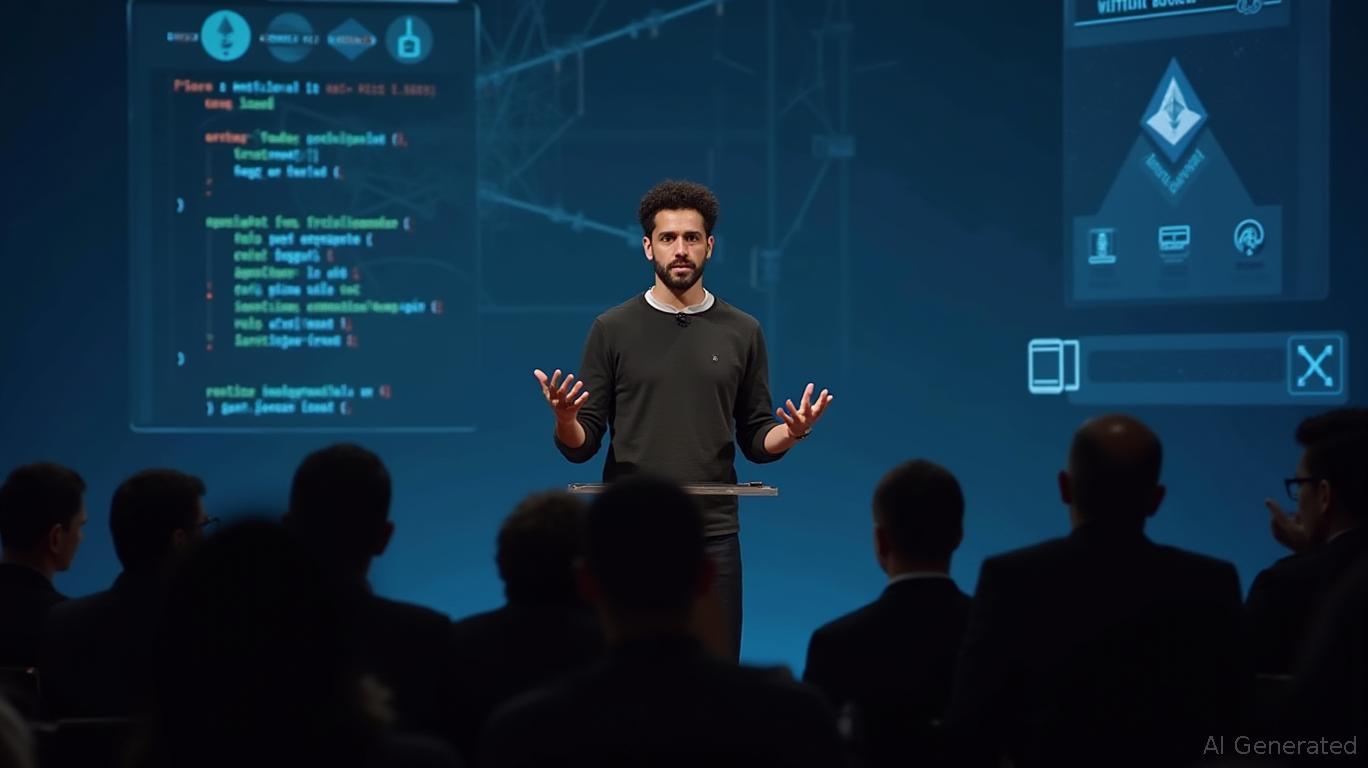Ethereum News Update: Buterin: Relying on Off-Chain Validator Trust Supersedes Mathematical Guarantees, Compromising Security
- Ethereum co-founder Vitalik Buterin warned off-chain validator trust creates critical vulnerabilities, despite on-chain consensus resilience against attacks. - Experts highlighted risks like MEV exploitation, oracle errors, and eclipse attacks, citing historical failures like 2020 bZx protocol breaches. - Market volatility sees Ethereum ETF outflows and 13.75% 60-day price decline, contrasting with bullish 2025 $10,000 price predictions from Fundstrat's Tom Lee. - Developers debate balancing scalability
Vitalik Buterin, one of Ethereum's co-founders, has issued an uncommon alert regarding the dangers of relying on off-chain validator trust. He pointed out that, although Ethereum’s consensus protocol is robust against attacks, systems that depend on validators’ integrity outside the blockchain itself can create significant security flaws. On October 26, Buterin posted a series of messages clarifying that even if 51% of validators act maliciously, they still cannot confirm an invalid block—an essential security guarantee of proof-of-stake networks,
Buterin’s caution has sparked renewed discussion among blockchain developers about the expanding responsibilities of validators in modern blockchain environments. He recognized that Ethereum’s design prevents direct theft of assets on-chain, but warned that validators could still indirectly endanger user funds. For instance, strategies like maximal extractable value (MEV) or censorship could take advantage of validator actions outside the chain. Polygon CTO Mudit Gupta agreed, stating that validators have the ability to “steal money” through MEV, while others, such as Polkadot’s Seun Lanlege, pointed out that malicious validators could disrupt block distribution or carry out eclipse attacks, as reported by Yahoo Finance.

Buterin’s comments come at a time when Ethereum is broadening into decentralized finance (DeFi) and tokenization of real-world assets, both of which depend heavily on off-chain data sources. Past events, such as the 2020 failures of the bZx and Compound protocols due to oracle mistakes, highlight the dangers of external data reliance, as CoinoTag noted. Developers like Robert Sasu from MultiversX have advocated for reducing off-chain dependencies and moving toward fully on-chain solutions to maintain decentralization (reported by Yahoo Finance).
Market trends add further complexity. Ethereum’s price recently hovered around $3,934, marking a 4.85% rise in 24 hours but a 13.75% drop over the past two months (as CryptofrontNews reported). At the same time,
Despite these obstacles, Ethereum’s technological progress persists. By 2025,
This ongoing debate highlights a fundamental challenge in blockchain architecture: finding the right balance between scalability, advanced features, security, and decentralization. As Buterin remarked, “When users depend on validators for actions outside the blockchain, trust takes the place of mathematics” (as BeinCrypto explained). With Ethereum’s market capitalization at $474.89 billion, participants must carefully weigh these trade-offs as the network integrates with traditional finance and expands to a global scale (as CryptofrontNews reported).
Disclaimer: The content of this article solely reflects the author's opinion and does not represent the platform in any capacity. This article is not intended to serve as a reference for making investment decisions.
You may also like
Cardano News Today: Cardano’s $0.63 Level Under Scrutiny—Will It Pave the Way to $1.70?
- ADA's $0.63 support level is critical for determining its path toward $1.70, with technical analysis highlighting a symmetrical triangle pattern. - A break above $0.63 could trigger a 157% rally to $1.75, while a breakdown risks a drop to $0.50, according to Coinotag and The Crypto Basic. - Fundamental catalysts include Cardano's gTLD initiatives and rising staking participation (70%), but whale activity has shifted to projects like Mutuum Finance. - Mixed market dynamics show 0.65% 24-hour gains but 38%

Verification Supersedes Guesswork: Noomez’s Open Burn Process Sets a New Standard for Trust in Crypto
- Noomez ($NNZ) introduces a 28-stage presale with escalating prices and automatic token burns to create scarcity and transparency. - Its deflationary model includes post-presale liquidity locks, staking rewards, and verifiable on-chain burns to reinforce trust. - The project aligns with crypto market trends favoring structured, utility-driven assets over speculative hype, attracting risk-aware investors. - A planned Noom Engine framework will automate governance and further reduce supply, though risks lik

SWC Shows Insider Confidence as 22% of Shares Held by Major Owners
BigBear.ai's Shares Soar 300%, but Financial Concerns Raise Questions About Its Valuation
- BigBear.ai's stock surged 300% in 2025 driven by defense AI contracts and partnerships like Tsecond Inc.'s rugged hardware integration. - Despite high-profile deployments (e.g., O'Hare Airport biometric system), Q2 2025 revenue fell 18% and net losses widened to $228.6M. - Analysts remain divided: some cite OB3 funding and $390M cash reserves as bullish, while others warn valuation (13× forward sales) exceeds fundamentals. - Competition from Palantir and C3.ai, plus reliance on $380M contract backlog, ra
